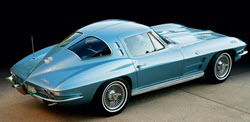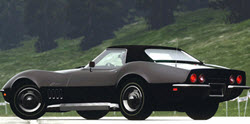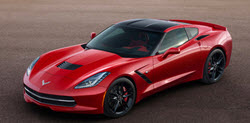The history of the Chevrolet Corvette.
Introduction
The Chevrolet Corvette, a quintessential American sports car, has stood as a testament to automotive performance and design excellence since its debut. It has woven its path through the annals of automotive history, constantly evolving across multiple generations. While the Corvette has embraced advanced technologies over time, it has consistently maintained its distinctive identity and allure.
Origins in the 1950s
Introduced in 1953 at General Motors’ Motorama event in New York City, the Corvette began as a show car with a bold concept. At its inception, it was crafted as a hand-built convertible featuring an innovative fiberglass body, departing from traditional automobile construction methods of the time. This initial model was equipped with a 3.8-liter inline-six-cylinder engine. The resulting excitement and positive reception from the public were instrumental in propelling it into limited production.
The Vision of Harley Earl
Behind the creation of the Corvette was GM designer Harley Earl, whose inspiration was drawn from the sleek sports cars of Europe. Earl aspired to design an American roadster that could stand toe-to-toe with the likes of Jaguar and MG. His vision was focused on a seamless blend of aesthetics and functionality, which would encapsulate the spirit of speed and style. Thus, the Corvette was molded into an icon of innovation, setting the groundwork for its future evolution.
Development through the 1960s
The 1960s heralded a transformative era for the Corvette with the unveiling of its second generation, known as the C2, which debuted in 1963. This generation saw a host of improvements in both performance capabilities and design intricacies. Notable enhancements included a reinforced frame for improved stability and the introduction of independent rear suspension, which translated into better handling and ride comfort.
Introduction of the Sting Ray
The C2 models were infused with the “Sting Ray” designation, a name that became synonymous with the Corvette’s legacy. A defining design feature that captivated enthusiasts was the split rear window on the 1963 coupe model. Engine choices expanded significantly during this period, exemplified by the introduction of the powerful 427 cubic inch V8, which firmly established the Corvette as a high-performance vehicle and reinforced its standing as a quintessential American sports car.
The 1970s and 1980s: Navigating Challenges
The Corvette encountered several hurdles during the 1970s, largely driven by stricter emission standards and economic shifts impacting the automotive sector. The third-generation models, known as the C3 and produced from 1968 to 1982, earned a reputation for their distinctive “shark” styling.
Technological Advancements
Amidst the challenges, Corvette engineers continued to innovate. Noteworthy advancements in this era included the incorporation of electronic ignition systems, enhancing engine efficiency and reliability, as well as the introduction of anti-lock brakes, improving vehicle safety. The launch of the C4 in 1984 marked a pivotal transition towards modernized performance and styling, signaling a commitment to technological progression and design refinement.
The 1990s to Early 2000s: Refinement and Power
Throughout the 1990s, the Corvette focused on refining its engineering and aesthetics, punctuated by the introduction of the C5 in 1997. This new generation was characterized by significant advancements, including an all-aluminum LS1 V8 engine, renowned for its power and lightweight attributes. Additionally, a newly designed structure enhanced the car’s rigidity and overall performance.
Z06 and Racing Heritage
The C5 era gave rise to models such as the Z06, which became synonymous with lightweight, high-performance engineering. This model leaned heavily into the Corvette’s racing heritage, as evidenced by the success of the Corvette Racing team. Their participation and achievements in prestigious events, such as the 24 Hours of Le Mans, bolstered the Corvette’s reputation as a serious contender in global motorsport circles.
Recent Developments: The C8 Revolution
In 2020, the Corvette underwent a monumental shift with the launch of the eighth-generation C8. This iteration broke tradition by adopting a mid-engine layout, a decision influenced by evolving performance requirements and increased competition in the sports car segment. This configuration markedly improved weight distribution and handling, taking the Corvette’s performance to new heights and further solidifying its position in the modern sports car realm.
Looking Ahead
The Corvette remains on a trajectory of continuous evolution, persistently integrating cutting-edge technologies and sustainable practices. As a flagship model for Chevrolet, it exemplifies innovation within the automotive industry, pushing boundaries and redefining possibilities with each new model. The Corvette’s ongoing advancements ensure that it maintains a prominent role in the automotive landscape well into the future.
Conclusion
From its modest beginnings in the early 1950s to its present status as a leading modern performance vehicle, the Corvette’s journey has been a reflection of the dynamic nature of automotive innovation. Each generation has built upon the triumphs of its predecessors, fortifying the Corvette’s illustrious place in automotive history. This enduring legacy not only celebrates the Corvette’s past achievements but also illuminates its future possibilities. For a deeper dive into the world of the Chevrolet Corvette and the latest updates, enthusiasts and interested parties are encouraged to visit Chevrolet’s official website, which serves as a valuable resource for comprehensive information about this iconic sports car.



